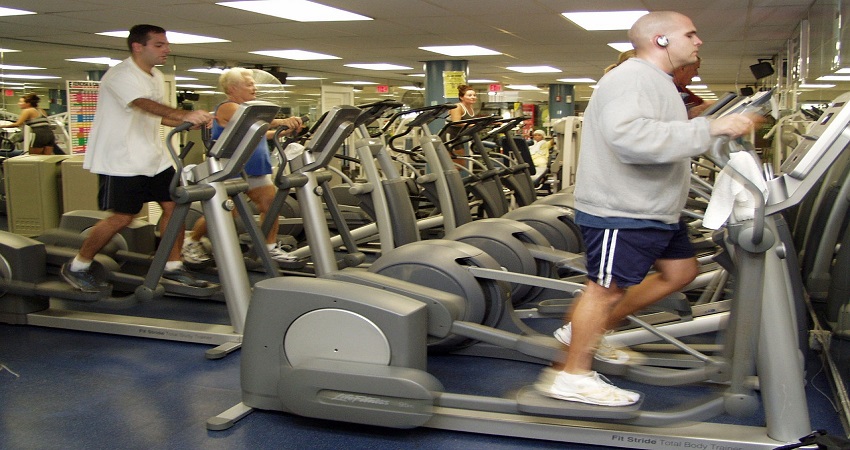
A recumbent bike offers similar benefits to a regular bike, making it just as good for exercise and cardiovascular health. The recumbent bike is a popular exercise option that provides numerous advantages for fitness enthusiasts.
This type of bike offers an alternative to the traditional upright bike, with a comfortable reclining seat that provides back support and eliminates strain on the neck and wrists. Its ergonomic design promotes proper body alignment, making it an excellent choice for individuals with back or joint issues.
Moreover, recumbent bikes provide an effective cardiovascular workout, engaging multiple muscle groups in the lower body, improving endurance, and burning calories. Whether you are a beginner or a seasoned cyclist, a recumbent bike offers a low-impact, safe, and enjoyable exercise experience. Discover more about the benefits and potential drawbacks of recumbent bikes as we delve deeper into this topic.
Benefits Of A Recumbent Bike
A recumbent bike offers several benefits over a regular bike, making it an excellent choice for those seeking a comfortable and joint-friendly workout option. Let’s explore these advantages in more detail:
Comfort
One of the most notable benefits of a recumbent bike is its superior comfort level. Unlike a regular bike where you have to sit on a small, narrow seat, a recumbent bike provides a larger and ergonomically designed seat that supports your entire back.
With the backrest and reclined seating position, recumbent bikes offer support to your spine, ensuring a comfortable workout experience even during longer sessions.
Reduced Back And Neck Strain
The design of a recumbent bike places your body in a reclined position, reducing the strain on your back and neck. This is particularly beneficial for individuals with back or neck pain or those recovering from an injury.
By minimizing stress on these areas, recumbent bikes allow you to enjoy a low-impact workout without compromising your comfort or exacerbating any existing pain or discomfort.
Less Pressure On Joints
Compared to a regular bike, a recumbent bike puts less pressure on your joints, making it an ideal option for individuals with joint issues or those looking to prevent joint strain.
The recumbent bike’s design distributes your weight evenly, minimizing the impact on your knees, hips, and ankles. This can help reduce the risk of joint injuries and allow you to engage in cardiovascular exercise without discomfort or pain.
Whether you are looking for a comfortable workout, aiming to reduce strain on your back and neck, or seeking a joint-friendly exercise option, a recumbent bike delivers on all fronts. Its ergonomic design and reduced pressure on the body make it an excellent alternative to a regular bike.
Drawbacks Of A Recumbent Bike
A recumbent bike offers a comfortable and low-impact alternative to a regular bike, but it is not without its drawbacks. While it has its advantages, such as reduced strain on the joints and a more ergonomic design, there are a few limitations that you should be aware of before making your decision. In this article, we will explore some of the drawbacks of a recumbent bike and why it may not be as good as a regular bike for everyone.
Limited Agility
One of the key drawbacks of a recumbent bike is its limited agility compared to a regular bike. Due to its reclined seating position and elongated frame, the recumbent bike tends to have a larger turning radius, making it more challenging to navigate tight corners or maneuver through congested areas. This can be particularly restrictive for those who enjoy off-road biking, where quick turns and sudden changes in direction are necessary. Moreover, the longer length of a recumbent bike may pose challenges when it comes to navigating through narrow passages, such as doorways or crowded bike paths.
Less Aerobic Workout
Another drawback of a recumbent bike is that it may offer a less intense aerobic workout compared to a regular bike. The reclined position of the rider results in a reduced amount of weight-bearing on the legs, leading to less muscle activation and potentially lower calorie expenditure.
Additionally, the pedaling motion on a recumbent bike primarily engages the muscles of the lower body, while a regular bike also activates the muscles of the upper body, particularly the arms and core. This division of muscle engagement can result in a less comprehensive workout, potentially limiting the cardiovascular benefits that can be achieved.
Lack Of Standing Performance
A regular bike allows riders to stand up and pedal when necessary, such as when climbing steep hills or accelerating quickly. This standing performance is not easily achievable on a recumbent bike. The reclined position and the design of a recumbent bike make it difficult, if not impossible, to maintain balance and stability when standing. This limitation can be especially significant for riders who enjoy more challenging terrains or high-intensity cycling workouts. Standing pedaling not only engages additional muscle groups but also allows for quick bursts of power, which can enhance overall performance and provide a more varied and dynamic workout experience.
Benefits Of A Regular Bike
Regular bikes have been a popular choice for cycling enthusiasts for decades. They provide a lot of benefits that contribute to an overall improved cycling experience. Let’s take a closer look at some of the key advantages of using a regular bike:
Improved Balance And Coordination
Balancing on a regular bike requires constant adjustment in order to stay upright. This helps improve your balance and coordination skills as you navigate varying terrains and obstacles. The continuous engagement of your core muscles to maintain balance contributes to a stronger and more stable body.
Strengthening Core Muscles
Regular biking puts your core muscles to work. While your legs power the pedaling motion, your core muscles including the abdominal, back, and pelvic muscles, act as stabilizers and provide support to maintain an upright posture. This constant engagement helps strengthen and tone your core muscles over time.
Versatility In Terrain
One of the major advantages of regular bikes is their ability to handle various terrains. With the right gears and adjustments, regular bikes can easily tackle uphill climbs, downhill descents, and flat roads. This versatility allows you to explore different environments, providing a more diverse and exciting cycling experience.
Drawbacks Of A Regular Bike
The recumbent bike offers several advantages over a regular bike, including reduced strain on the back and neck, increased comfort, and enhanced aerodynamics. However, drawbacks of a regular bike include discomfort during long rides, increased risk of certain injuries, and limited shock absorption.
Riding a regular bike is a popular form of exercise and transportation, but it does come with some drawbacks. It’s important to be aware of these potential downsides, so you can make an informed decision about whether a regular bike is the right choice for you. In this section, we will discuss two common drawbacks of a regular bike: discomfort and saddle sores, and increased risk of injury.
Discomfort And Saddle Sores
Riding a regular bike for extended periods can lead to discomfort, especially in the buttocks area. The small, narrow saddle of a regular bike can cause pressure points on the sit bones, leading to soreness and even saddle sores. Saddle sores are painful skin irritations that can develop from friction and pressure on the saddle.
Additionally, the hunched forward position on a regular bike can strain the neck, shoulders, and lower back, leading to muscle stiffness and discomfort. This can be particularly bothersome for individuals with existing back or joint issues.
Overall, the discomfort associated with riding a regular bike may discourage some individuals from enjoying longer rides or taking up cycling as a regular form of exercise.
Increased Risk Of Injury
Regular bikes can also pose an increased risk of injury compared to recumbent bikes. The upright position on a regular bike places more stress on the wrists, elbows, and hands, potentially leading to overuse injuries such as tendonitis or carpal tunnel syndrome.
Bicycles with multiple gears may also come with a greater risk of accidents and injuries. Shifting gears incorrectly or at the wrong time can cause the chain to slip, leading to falls or strained muscles.
Furthermore, the higher center of gravity on a regular bike makes it easier to lose balance and fall, especially when navigating uneven or slippery terrain. This can result in bruises, sprains, or even more serious injuries like fractures.
Considerations For Choosing Between Recumbent And Regular Bikes
Choosing between a recumbent bike and a regular bike involves several considerations. While a recumbent bike offers a more comfortable riding position and better back support, a regular bike provides a more intense workout and better maneuverability. Ultimately, the choice depends on individual preferences and specific fitness goals.
Fitness Goals
When considering whether to choose a recumbent bike or a regular bike, your fitness goals play a crucial role. Both types of bikes provide excellent cardiovascular exercise and help in building strength and endurance. However, your specific fitness objectives should guide your decision.
- If you’re looking to improve your overall fitness level, lose weight, or train for endurance events, a regular bike may be a better choice. Its upright riding position engages your core, works your upper body, and requires more effort from your leg muscles.
- On the other hand, if you’re primarily focused on low-impact exercise, such as recovering from an injury or reducing joint stress, a recumbent bike can be an excellent option. Its laid-back design offers better back support and reduces strain on your wrists, neck, and shoulders.
Health Conditions
Your current health conditions and physical limitations should also guide your decision between a recumbent bike and a regular bike. Depending on your specific needs, one type may be more suitable than the other.
- If you suffer from chronic pain, arthritis, or any condition that affects your joint flexibility and range of motion, a recumbent bike offers a more comfortable and less strenuous option. The reclined position reduces pressure on your joints, making it easier to exercise without exacerbating your condition.
- However, if you have no existing health concerns and are looking for a more intense workout that engages multiple muscle groups simultaneously, a regular bike’s upright posture can provide a higher level of intensity and challenge.
Terrain And Riding Preferences
Consider your terrain and preferred riding style when choosing between a recumbent bike and a regular bike. The type of bike you select should align with the environments you plan to ride in and the experiences you seek.
- If you enjoy off-road cycling, mountain biking, or exploring challenging terrains with uneven surfaces, a regular bike with its agile maneuverability and suspension system can better handle such environments.
- On the other hand, if you plan to ride primarily on paved roads or flat surfaces, a recumbent bike can offer a more relaxed experience. Its low center of gravity makes it easier to maintain stability, and the aerodynamic design can provide a smoother and more enjoyable ride.
Frequently Asked Questions Of Is Recumbent Bike As Good As Regular Bike?
Is A Recumbent Bike As Effective As A Regular Bike For Cardiovascular Exercise?
Yes, a recumbent bike is just as effective as a regular bike for cardiovascular exercise. Both types of bikes provide a great workout for your heart and lungs, helping to improve your overall fitness and endurance levels.
Can A Recumbent Bike Provide The Same Level Of Leg Workout As A Regular Bike?
Absolutely! Recumbent bikes are designed to work the same leg muscles as regular bikes. The only difference is that you are in a reclined position, which may actually reduce strain on your knees and lower back.
Are Recumbent Bikes Suitable For People With Lower Back Pain Or Knee Issues?
Recumbent bikes can be a great option for those with lower back pain or knee issues. The ergonomic design of the bike provides better support and puts less stress on the joints, making it a more comfortable and pain-free option for exercise.
Is It Possible To Burn The Same Amount Of Calories On A Recumbent Bike As On A Regular Bike?
Yes, you can burn the same amount of calories on a recumbent bike as on a regular bike. The calorie-burning potential depends on factors such as intensity, duration, and resistance level. So, as long as you push yourself and maintain a challenging workout, you can achieve similar calorie burn on a recumbent bike.
Conclusion
To sum up, both recumbent bikes and regular bikes offer unique benefits and suit different individuals based on their preferences and physical conditions. While regular bikes promote a more traditional and versatile cycling experience, recumbent bikes provide additional comfort and posture support.
Ultimately, the choice between the two should be based on personal preference, goals, and physical limitations. Whether you opt for a recumbent bike or a regular bike, the key is to stay active and enjoy the invigorating benefits of cycling.




